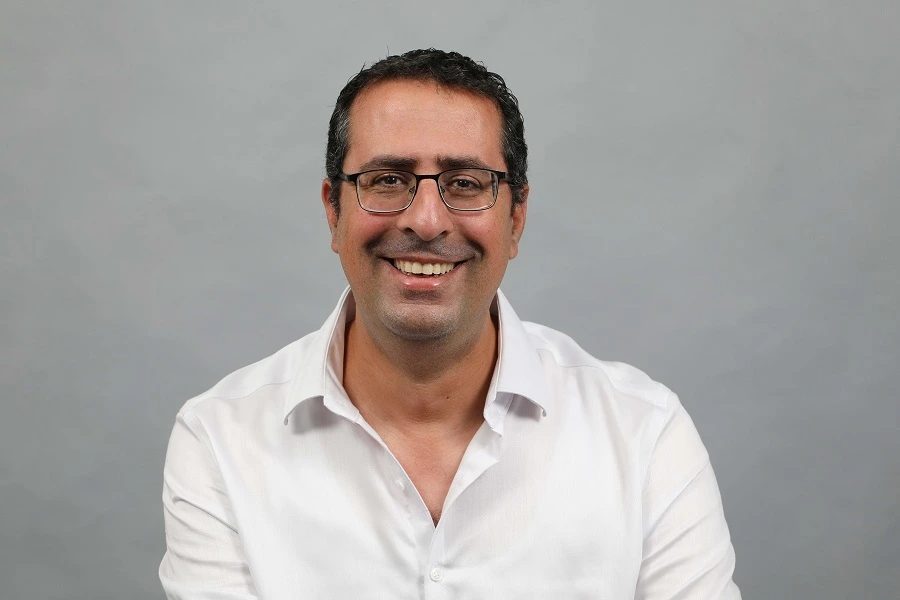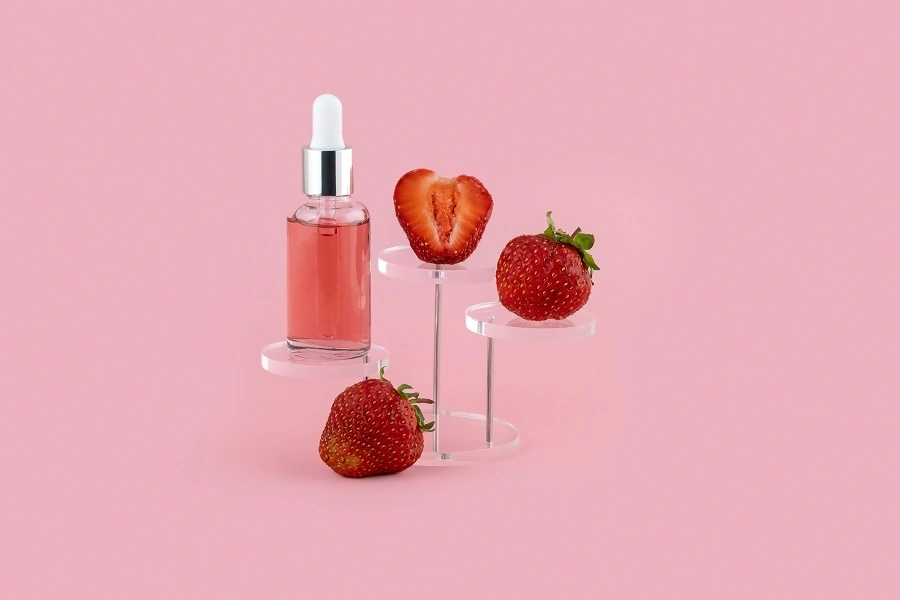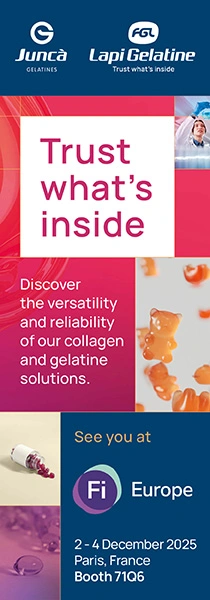Novella founder talks cell-grown strawberry bioactives before SupplySide West launch
Key takeaways
- Novella has developed a strawberry-based bioactive ingredient made from whole plant cells through precision cultivation.
- The technology supports consistent, sustainable production with 99% fewer resources than traditional methods.
- The ingredient targets functional foods and supplements for enhanced stability and bioactive diversity.
Biotech company Novella has developed “Novella Strawberry∞” — a bioactive ingredient derived from whole strawberry cells — using precision cultivation. The solution “bypasses” the need to grow the entire plant by cultivating phytonutrients directly from strawberry cells.
The cell-grown ingredient helps manufacturers overcome challenges presented by the “climate-sensitive” fruit’s lack of a protective peel, often leading to oxidation and quality loss.
Manufacturers can incorporate the water-dispersible powder in powders, capsules, bars, or beverages. It also reduces resource use by 99%, including water, land, and labor, claims the Israel-based firm.
Ahead of the patent-pending ingredient’s upcoming launch at SupplySide West 2025 in Las Vegas, US, Food Ingredients First speaks with Novella’s co-founder and chief business development officer, Itay Dana, to discuss the scientific and commercial thinking behind debuting with strawberry cells, and how Novella Strawberry can support functional food innovation.
What inspired Novella to start with strawberries as its first whole-cell ingredient?
Dana: We had many options when we began our journey, but also wanted to listen to the market. We spoke with brand owners and ingredient companies and asked them which fruit they would like to see developed as a functional ingredient. The answer was clear and consistent: strawberry. It is one of the most loved and recognized fruits worldwide, but has not yet received the place it deserves in the industry. It is delicate and difficult to handle, and its bioactive profile is limited when harvested ripe.

With our AuraCell plant cell technology, we can change that. By cultivating strawberry cells in a controlled environment, we unlock a much broader and more diverse composition, preserve stability and consistency, and reveal the fruit’s full potential.
What can you tell us about your precision cultivation process and the challenges faced while developing the ingredients?
Dana: Our process starts from a tiny piece of plant tissue that we guide into becoming a stable and productive plant cell culture. From there, we grow these cells in controlled bioreactors, where they multiply and develop while keeping their natural composition intact. This is what we call precision cultivation, because every growth parameter is monitored and optimized to deliver consistency and quality.
The main challenges were to make the process stable and scalable. Plant cells are very sensitive, and it took time to find the right conditions for them to grow in large volumes while still producing the full spectrum of natural compounds we were looking for.
How is Novella Strawberry different from other berry-based or plant-cell solutions?
Dana: Most industrial berry extracts, including strawberry, focus mainly on a single group of compounds: flavonoids, especially anthocyanins. Strong clinical data support these products, but they are essentially one-dimensional, requiring relatively high usage levels to show results.
 Cultivating strawberry cells in a controlled environment helps preserve stability and consistency to reveal the fruit’s full potential, says Dana.Our whole-cell ingredient contains a wide spectrum of bioactive groups, including alkaloids, terpenes, and polyphenols. Each of these groups contains dozens of compounds with significant health benefits. According to scientific literature, these compounds not only act individually but also create strong synergy and, in many cases, deliver faster effects compared to flavonoids alone. This diversity and synergy are what make Novella Strawberry ∞ such a unique and effective solution.
Cultivating strawberry cells in a controlled environment helps preserve stability and consistency to reveal the fruit’s full potential, says Dana.Our whole-cell ingredient contains a wide spectrum of bioactive groups, including alkaloids, terpenes, and polyphenols. Each of these groups contains dozens of compounds with significant health benefits. According to scientific literature, these compounds not only act individually but also create strong synergy and, in many cases, deliver faster effects compared to flavonoids alone. This diversity and synergy are what make Novella Strawberry ∞ such a unique and effective solution.
In human cell tests, Novella Strawberry∞ showed antioxidant performance up to 100 times stronger than a standard strawberry extract. That potency means lower usage levels, better efficiency, and new opportunities for product innovation. Commercially, Strawberry∞ can act as a booster that integrates into existing formulations.
How does AuraCell make production more scalable and sustainable than traditional extracts?
Dana: AuraCell changes the way ingredients are made. Instead of growing fields of fruit, waiting for harvests, and extracting compounds with heavy processing, we cultivate plant cells in a fully controlled environment. Production does not depend on seasons, weather, or geography. The same quality can be reproduced consistently, batch after batch. From a sustainability perspective, we save vast amounts of water, land, and labor compared to farming and extraction. There is no waste biomass because every cell we grow contributes to the final ingredient.
How does your whole-cell method solve stability and consistency issues with strawberry bioactives?
Dana: Among all the berries, the strawberry is unique because it does not have a strong or thick peel to protect it. During transport, the fruit is easily damaged, and once the skin is compromised, oxidation starts quickly and quality drops fast. The same sensitivity continues throughout handling and processing, so it has been difficult for the industry to capture and preserve the active compounds in strawberries.
 In tests, the antioxidant activity of the strawberry bioactive was up to 100 times stronger than a standard strawberry extract.In our case, there is no traditional supply chain and no transportation of fruit from fields to factories. By cultivating strawberry cells directly in our controlled facilities, we eliminate this entire stage of risk. Without shipping, storage, and handling fresh fruit, we reduce the chances of oxidation and the loss of sensitive compounds.
In tests, the antioxidant activity of the strawberry bioactive was up to 100 times stronger than a standard strawberry extract.In our case, there is no traditional supply chain and no transportation of fruit from fields to factories. By cultivating strawberry cells directly in our controlled facilities, we eliminate this entire stage of risk. Without shipping, storage, and handling fresh fruit, we reduce the chances of oxidation and the loss of sensitive compounds.
With plant cells, and specifically strawberry cells, the situation is very different. The cell wall is naturally strong and resilient, and in our production process, it serves as a stable barrier that protects the actives inside. This stability at the cellular level is a key part of how we work. It allows us to maintain the full bioactive composition, prevent early degradation, and deliver a consistent and reliable ingredient for formulation.
Which functional food categories do you see as key opportunities?
Dana: Dietary supplements are a natural entry point, with capsules and powders that can highlight the strength and stability of Novella Strawberry∞. Functional beverages are an exciting category because they need clean ingredients that remain stable and effective over time. Snack bars and dairy alternatives are also a perfect fit, as they benefit from the added nutritional value and the marketing appeal of a whole-cell strawberry ingredient.
At the same time, we see Novella Strawberry∞ as a real booster for existing products that already include strawberries or other berries. These categories are very strong in the food industry, especially yogurts, beverages, and snacks with fruit additions. Now they can be enriched with active compounds from strawberry cells, making familiar products delicious and healthier.
Where do you see Novella’s technology expanding next after strawberries?
Dana: Novella Strawberry∞ is only the first step. Our AuraCell platform is designed to work with many different plants, not just one fruit. We are already exploring other berries, botanicals, and plants that have strong health benefits but are very hard to use because of issues like stability, consistency, or cost. We can overcome these barriers by cultivating them as whole cells and bringing their full potential into the market.
We are already working on our next products, including tomato and hops, and other exciting candidates moving through development. You can always expect more surprises from Novella as we unlock new plants and expand what is possible in functional ingredients.











